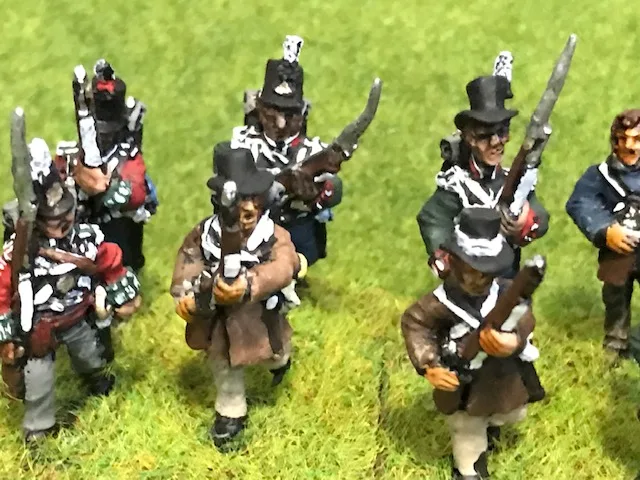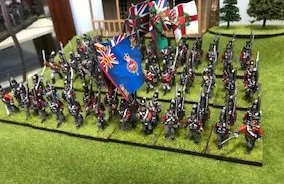To oppose my American Light Dragoons here are Captain William Merritt and the first troop of the Niagara Light Dragoons. The regiment was raised in 1813 and saw much active service. Captain William Merritt, who was born in upstate New York a son of a Queens Ranger loyalist. From 1813 he led his troop in defense of their homesteads including at the action of Stoney Creek. They were especially active in the skirmishes wars in 1813 against the renegade Colonel Wilcox and his Canadian volunteers. Captain Merritt was captured at Lundy's Lane in 1814, by "six skulking fellows" during the fighting in the darkness. He was interned at Pittsfield Massachusetts for the rest of the war.
19th Light Dragoons were raised by Colonel Sir John Burgoyne (a cousin of General John Burgoyne of Saratoga fame) as the 23rd Regiment of Light Dragoons on 24 September 1781 for service in India. The regiment arrived at Fort St. George, Madras in 1782 and became the first British cavalry regiment to serve in India. In 1786, the regiment was renumbered as the 19th Regiment of Light Dragoons.
After long and varied service in India the 19th embarked for England on 20 October 1806, and remained in Britain until the outbreak of war with the United States in 1812. They arrived in Quebec in May1814. They were involved in the blockade and re-capture of Fort George, and the destruction of Black Rock and Buffalo in New York State. They also participated in Colonel Thomas Pearson's delaying action against Brigadier General Winfield Scott's brigade during the American invasion of 1814. subsequently they fought at the Battle of Chippawa in July 1814, the Battle of Lundy's Lane later in the month and the Siege of Fort Erie in August 1814. Later they pursued American raiders who had struck at Battle of Malcolm's Mills in November 1814. For these actions, the regiment earned the battle honour of "Niagara".
Royal Artillery manning the guns.
Come on, how can you do War of 1812 and not have a rocket battery! It's down right unpatriotic! Mine comes from Old Glory's Napoleonic line. In Canada they used the tripod rather then the smaller launcher. I left out the Royal Horse Artillery crew (who might return if I ever do New Orleans) and substituted Royal Marine Artillery crew who manned in Canada. These men wore the same uniform as the Royal Artillery but with white, not yellow lace. These figures are from Knuckleduster miniatures. Especially love the officer looking up!
 |
| "Add once the rockets are up, who cares where they come down? That's not my department, " says Wernher von Braun. " |





















































